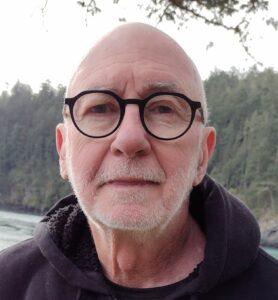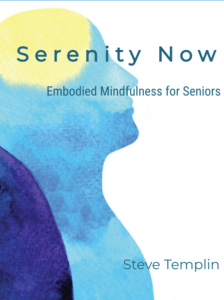The experience of safety is not only comforting to the soul, it’s also an immune booster.
So during this COVID-19 pandemic where there is so much uncertainty and fear, it’s important for us to be able to experience safety …. for the sake of our immune systems.
Just how do we experience safety …. when the world isn’t.
The answer comes from your loving grandma’s wisdom …. as well as from emerging neuroscience …. specifically Polyvagal Theory.
Your loving grandma would ask ‘Sweetheart, what’s wrong’? And then she’d listen to you for as long as it took. You could say anything and she’d just listen kindly, nodding her head.
And you’d know that you were loved and cared for by her willingness to simply be present with you. Your autonomic nervous system (ANS) would know that you were loved, cared for, and safe as well. That’s how nervous systems work.
Nervous Systems Interact
We are designed to balance or regulate our nervous systems by the way we interact with ourselves and with one another. Kindness is a biological signal.
When we’re kindly engaged with another, being present to someone in their time of need, their ANS is likely to shift into a more resourceful state. In the more balanced ANS state, they become more resilient both emotionally and physically. This is an example of co-regulation.
This also works for the individual as well. When I learn to be with myself in times of need, especially the felt aspects of myself, the more vulnerable parts of me, in that same kind and patient way, my ANS becomes more balanced and I become more resourceful. This is self-regulation.
From the Polyvagal perspective, kind, patient, and non-judgmental engagement activates the ventral aspect of the vagus nerve. The ventral vagus is that part of us that gives us the capacity to navigate life’s challenges more adroitly.
While we might have missed out on the ‘good grandma’ experience, it’s never too late to learn to self-regulate or co-regulate.
Safety and Polyvagal Theory
Safety is the signal that allows our self-healing gizmo — the autonomic nervous system — to function optimally. This state includes enhanced immune function, which is of special importance now.
The Polyvagal Theory teaches us that ‘safety’ is the essential ingredient needed to fuel self-healing. Because if we’re not safe we’ll be diverting our biological resources toward defense and away from healing. From this perspective, a kind grandma who’s a good listener is powerful medicine.
When we activate the ventral vagus through kind engagement, there’s a neurological shift from the amygdala (concerned with threat assessment and protection) to the prefrontal cortex (present moment awareness).
Stephen Porges, Ph.D is the founder of Polyvagal Theory and is quoted as saying ‘Safety is the treatment’. This refers to the fact that we heal spontaneously when the autonomic nervous system is balanced.
Here’s a key piece of information. Human beings are wired to interact with one another. Our nervous systems interact, or co-regulate, based on how we communicate with one another. Better yet, we co-regulate based on how we ‘listen’ when we’re communicating.
When you are listened to, with kindness and without judgment, as if you really matter, your nervous system perceives that you are safe. In this state, your immune system, as well as other organ functions, will spontaneously improve. They improve spontaneously because you’re wired to heal.
The Challenge of Being a Good Listener
Most of us spend a lot of time in our left brain trying to solve problems. We’re in control. It’s familiar territory. The kind of listening that signals love and safety is more of a right hemisphere function.
When we listen to a friend sharing how they feel we could easily have ideas on how to help them. We could have an agenda, a plan, and even an intention to help them. These are left brain functions, or ego functions, that tend to get in the way of co-regulation where nervous system heals nervous system.
On the other hand, just listening without an agenda can be a vulnerable experience because we simply don’t know what’s going to happen next. This is where learning how to comfortably be with our own sensations and feelings paves the way to offering that experience to another.
The spiritual teacher Eckhart Tolle tells a story about listening to his elderly neighbor for hours as she lamented about a pressing concern. The next day she shared with him that she’d had the best night’s sleep in years and wondered just what is was that he had done. Tolle points out that he had done nothing other than to simply be present to this woman and to listen kindly to her concerns.
The point here is that the autonomic nervous system spontaneously balances (and physiology follows) as we experience safety. And one of the surest ways to create that experience is to find a caring other who will simply listen to you with kindness and caring and without judgment or an agenda.
Guidelines for Listening and Sharing
You and a friend can take turns ‘sharing’ and ‘listening’. This not only works when we’re face to face, but works well over the phone and with online video.
space
When you shift from thinking to feeling (without judgment) you activate your mindbody’s capacity for healing and creative problem solving. You also enhance your capacity for interpersonal balancing (co-regulation) as well.
space
So when you begin a session it helps to connect with your body. You can become aware of breathing slowly through your nose while noticing sensations and feelings in your body. This step has the capacity to balance brainwaves, enhance left/right hemisphere integration, increase heart rate variability and autonomic nervous system balance, regulate the pH of your blood, and more.
space
When you can experience your own inner experience with kindness and care and without judgment (this is where self-regulation practices come in handy) you’re more able to do that for another. If you can sit with yourself it becomes much easier to sit with a friend.
Feeling is the Key
Whether it’s self-regulation or co-regulation the consistent solution is to get out of your head and reconnect with the direct and non-judgmental experience of your bodily felt experience.
Since most of us have trained ourselves to avoid unpleasant feelings we may have to do some extra practice around consciously noticing what we’d rather not notice.
Surprisingly and counterintuitively as we practice experiencing the felt qualities of unpleasant physical or emotional feelings they ease. At the same time the pain or anxiety resulting from those avoided feelings eases as well.
This takes practice, and with practice, we can learn to trust and benefit from the process of reconnecting with the felt wisdom in our bodies.


 Steve is a retired Doctor of Oriental Medicine, Acupuncture Physician, and HeartMath Trauma-Sensitive Certified Practitioner with over 35 years of clinical experience in the fields of Energy Medicine, Energy Psychology, and Biofeedback.
Steve is a retired Doctor of Oriental Medicine, Acupuncture Physician, and HeartMath Trauma-Sensitive Certified Practitioner with over 35 years of clinical experience in the fields of Energy Medicine, Energy Psychology, and Biofeedback. 